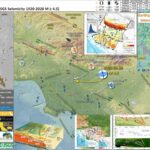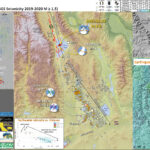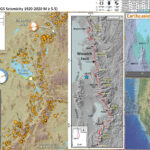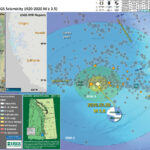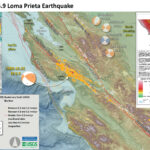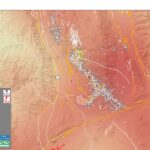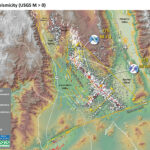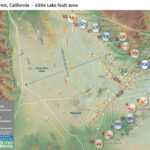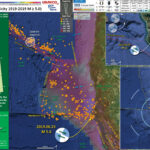Late last night there was a sequence of earthquakes in southern California. The mainshock is a M 4.5 earthquake. https://earthquake.usgs.gov/earthquakes/eventpage/ci38695658/executive This temblor was widely felt across the southland (including by my mom, who was warned by earthquake early warning). This…
Earthquake Report: Owens Valley, CA
Well, the east side of the Sierra lives up to its reputation for being in earthquake country. From the July 2019 Ridgecrest Earthquake Sequence (reports here)to some shakers east of Mono Lake, to the May 2020 Monte Cristo Earthquake Sequence…
Earthquake Report: Mendocino triple junction
Well, it was a big mag 5 day today, two magnitude 5+ earthquakes in the western USA on faults related to the same plate boundary! Crazy, right? The same plate boundary, about 800 miles away from each other, and their…
Earthquake Report: Salt Lake City
As I was waking up this morning, I rolled over to check my social media feed and moments earlier there was a good sized shaker in Salt Lake City, Utah. I immediately thought of my good friend Jennifer G. who…
Earthquake Report: Mendocino fault
I was in Humboldt County last week for the Redwood Coast Tsunami Work Group meeting. I stayed there working on my house that a previous tenant had left in quite a destroyed state (they moved in as friends of mine).…
Earthquake Report: 1989 Loma Prieta!
Well, I prepared this report for the 30th anniversary of the 18 Oct 1989 Loma Prieta M 6.9 earthquake in central California, a.k.a. the World Series Earthquake (it happened during the 1989 World Series game at Candlestick Park in San…
Earthquake Report: Ridgecrest Update #3 Literature Review
I have reviewed a small portion of the literature for the tectonics of the northern Eastern California shear zone, Owens Valley fault, Garlock fault, etc. I have a basic knowledge of this region and have attended several Pacific Cell Friends…
Earthquake Report: Ridgecrest Update #2
Summary of Reports for the Ridgecrest Earthquake Sequence The original Earthquake Report for this widely felt sequence is here. The update #1 Earthquake Report for this widely felt sequence is here. The update #2 Earthquake Report for this widely felt…
Earthquake Report: Ridgecrest Update #1
Summary of Reports for the Ridgecrest Earthquake Sequence The original Earthquake Report for this widely felt sequence is here. The update #1 Earthquake Report for this widely felt sequence is here. The update #2 Earthquake Report for this widely felt…
Earthquake Report: Mendocino triple junction
Well, I was on the road for 1.5 days (work party for the Community Village at the Oregon Country Fair). As I was driving home, there was a magnitude M 5.6 earthquake in coastal northern California. https://earthquake.usgs.gov/earthquakes/eventpage/nc73201181/executive I didn’t realize…

